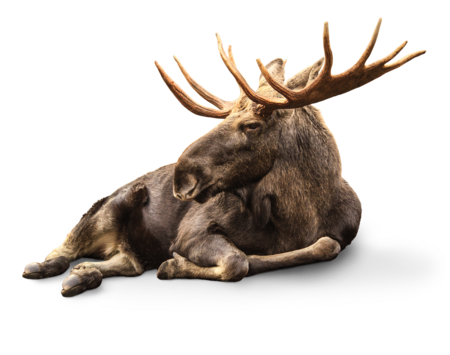European elk
Alces alces alces
![[Translate to English:] [Translate to English:]](/fileadmin/_processed_/f/6/csm_europaeischer-elch-tierpark-hellabrunn-europa-tierlexikon_6e13c2f176.jpg)
- Family
- Deer (Cervidae)
- Weight
- ♀ 270 – 400 kg, ♂ 360 – 700 kg
- Habitat
- Wetlands, tundra, moors, mountains, forests
Roaring bulls
Bull elk emit a low-pitched roar to attract cows, with the throat sac acting as a resonator. During the mating season, the bulls make rutting pits by digging shallow holes in the ground, which they soak in urine and then proceed to roll in. The cows wallow likewise. After an average gestation period of eight months, females give birth to one calf, or occasionally twins.

New antlers every year
Only the males have antlers, which they shed each year and grow a new set in spring. The antlers are covered with a soft, vascularised membrane called “velvet”, which transports nutrients to the growing antlers. Once the antlers are fully grown, the velvet withers. The elk then rubs its antlers against trees to help remove it. A full-grown antler can have a spread of 1.5 m and weigh up to 20 kg. The headdress is shed at the end of the rut.
The elk became extinct in Germany in 1850. Today, individual wanderers occasionally return from neighbouring Poland or the Czech Republic.
Distribution
